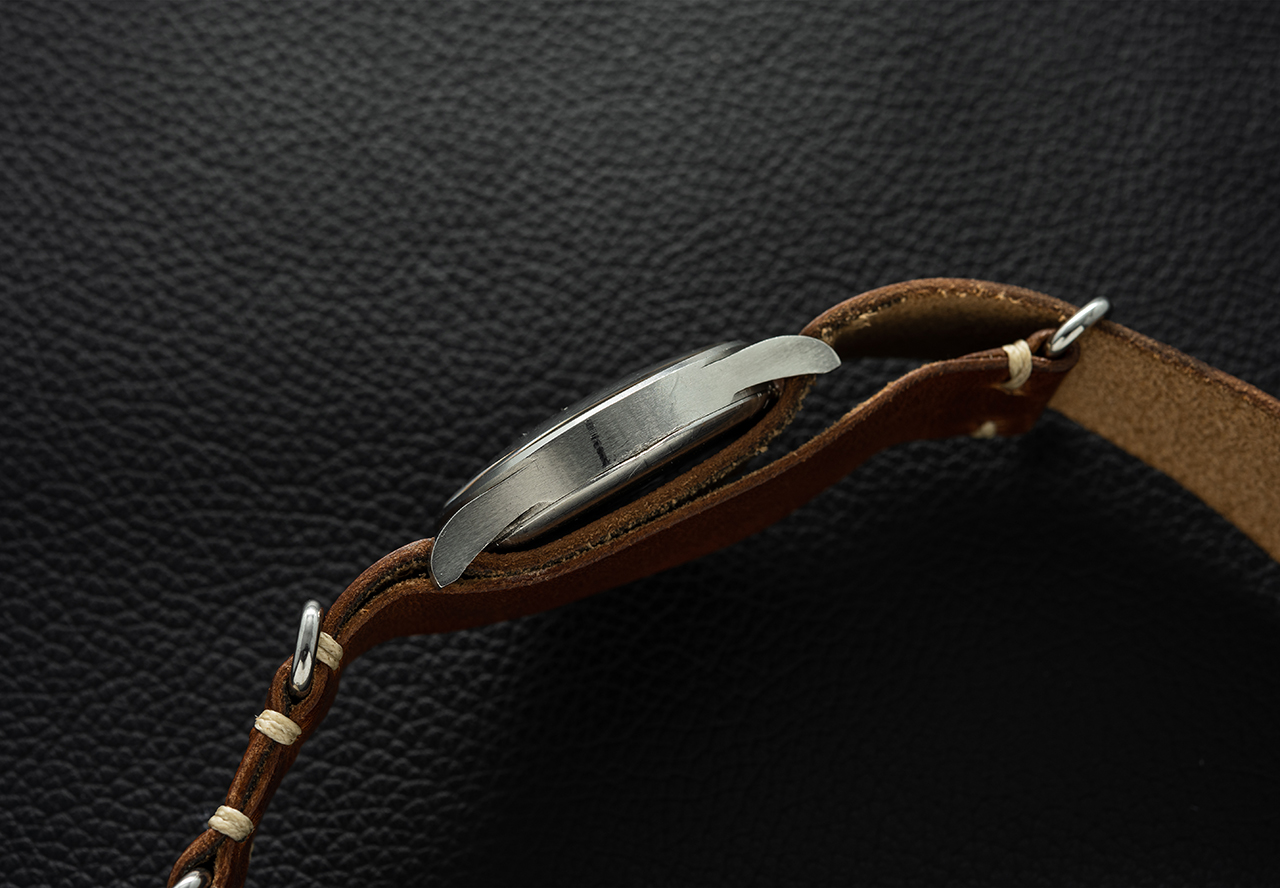British Military IWC Mark 10 “Dirty Dozen”
SOLD
Out of stock
DETAILS
The IWC W.W.W. is one of the most sought after of the “Dirty Dozen”. Widely referred to as the IWC Mark 10 by collectors it is also amongst the rare with an estimated 5000-6000 pieces were produced. The IWC being the only one of the 12 brands that delivered the W.W.W. with a waterproof snap back and not a screw back.
This particular example is in excellent original condition and features its original dial with large radium lume plots and original hands. Rarely found in this condition, the case remains unpolished and features its original unsigned crown. These robust timepieces were made to last, and when they were delivered in 1945 they were far superior than any commercially produced watch at that time. As a result of their quality, these watches can be worn regularly and enjoyed.
| LOCATION | London – UK |
|---|---|
| BRAND | IWC |
| MODEL | W.W.W. "Dirty Dozen" |
| YEAR | 1945 |
| REFERENCE | "Mark 10" |
| MATERIAL | Stainless Steel |
| MOVEMENT | Cal. 83 Manual Wind |
| CASE DIAMETER | 35mm |
| BRACELET/STRAP | Brown Leather NATO |
| BOX/PAPERWORK | Watches of Knightsbridge |
| CONDITION | Excellent |
STORY BEHIND
DIRTY DOZEN HISTORY
In the 1940s, during World War II, the British Ministry of Defence, required wristwatches to issue to army personnel, as civilian timepieces just weren’t adequate. So, the MoD invited any Swiss watch manufacturer to build a wristwatch to specific MoD standards.
Twelve manufacturers were eventually chosen to fulfil this request from the MoD, that matched up to the required standards, resulting in the nickname ‘The Dirsty Dozen’. These consisted of watches from: Buren, Cyma, Eterna, Grana, Jaeger Le-Coultre, Lemania, Longines, IWC, Omega, Record, Timor and Vertex. By 1945, these timepieces were all delivered to the MoD and were accompanied with pigskin or canvas straps to fit on the wrist, as of course G10 NATO straps didn’t exist until the 70s.
What the MoD specified, was precisely what you’d expect a military watch to be – water-resistant, luminous, regulated to chronometer level and cased in something that could cope with the rigors of war: stainless steel. The dial needed to be black, with Arabic numerals and subsidiary seconds, to maximise legibility. The case back had to include the W.W.W (Watch.Wrist.Waterproof) designation, to distinguish the watch from civilian made pieces and include a broad arrow, which is the traditional marking for Crown property marking, with the dial only displaying the broad arrow.











